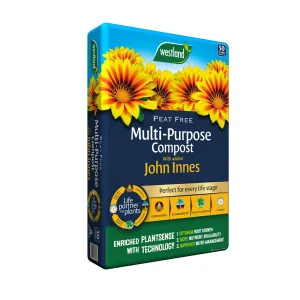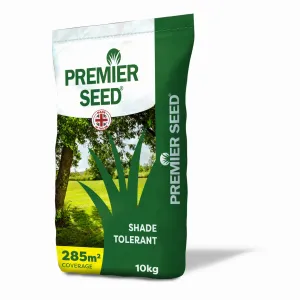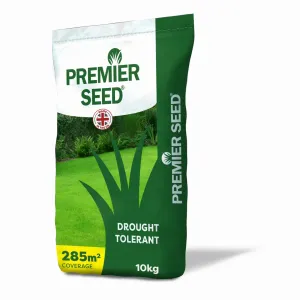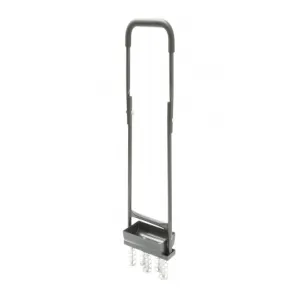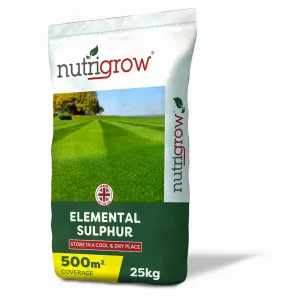Whether you’re starting a brand-new lawn or overseeding bare patches, grass seed that refuses to germinate can leave you scratching your head. Pick through the following check list to see if one or more of these reasons could apply to your lawn.
Wrong Time of Year
When did you sow your seed? Grass seed needs the right temperature to germinate, so sowing in the depths of winter is never a good idea - a sudden cold snap can slow or completely halt germination. Conversely, periods of hot, dry weather can have the same effect.
Cool-season grasses (like perennial ryegrass, and fescues) germinate best in early spring or early autumn when soil temperatures are between 10–18°C (50–65°F). Warm-season grasses (like Bermuda, zoysia, and centipede) prefer late spring to early summer when soil temperatures are consistently above 18°C (65°F).
Tip: Air temperature can be misleading, so use a soil thermometer to check the temperature before seeding.
Poor Seed-to-Soil Contact
Grass seed needs direct contact with soil to absorb moisture and begin germination. If you’ve simply scattered seed over thatch, mulch, or compacted soil, it may never take root.
Loosen the top few inches of soil and break up any large clumps of earth. Make sure you remove sticks and stones below the soil surface so that seeds are not simply sat on top of material that will prevent germination.
Tip: Lightly rake the area before and after seeding to ensure good contact. For overseeding, mow the lawn short and dethatch if necessary.
Incorrect Watering
Water is crucial—but balance is key. Seeds need to stay consistently moist (not soaked) during germination. Drying out even once can kill the seed. On the flip side, overwatering can wash seeds away or cause rot.
Water is known as the primary germination regulator – in other words, there has to be just the right amount for grass seed to germinate. You’ll need to check moisture levels daily to ensure things haven’t dried out too much overnight, and then water with a fine spray to avoid moving the seed or creating puddles.
Tip: Water lightly 2–3 times a day until germination, then reduce frequency and increase watering depth as seedlings grow.
Using the Wrong Grass Seed
Not all grass seed is created equal. Using a variety that’s not suited to your climate, soil type, sun exposure, or end use can lead to poor results.
Take time to select the right variety for your specific lawn needs. In British lawns, the most common grass seed varieties are chosen for their adaptability to the UK climate, resistance to wear, and overall appearance. Most lawn seed mixes are blends of different species to balance durability, texture, and colour. The main types are:
1. Perennial Ryegrass (Lolium perenne)
• Most common grass in UK lawns
• Hard-wearing and ideal for high-traffic areas
• Coarse leaf texture (though fine cultivars are available)
• Good year-round colour and relatively low maintenance
2. Chewings Fescue (Festuca rubra subsp. commutata)
• Fine-leaved with a lush appearance
• Excellent for ornamental or "luxury" lawns
• Tolerates close mowing and drought
• Not as wear-resistant as ryegrass
3. Creeping Red Fescue (Festuca rubra subsp. rubra)
• Fine, dense texture and soft feel
• Has creeping rhizomes for self-repair
• Shade and drought-tolerant
• Common in mixed seed blends for a lush, green look
4. Slender Creeping Red Fescue (Festuca rubra subsp. litoralis)
• Similar to creeping red fescue but more suited to finer turf
• Used in bowling greens and golf courses
• Good drought and shade resistance
5. Smooth-stalked Meadow Grass (Poa pratensis)
• Very durable and ideal for sports and family lawns
• Spreads via underground rhizomes, helping repair wear patches
6. Browntop Bent (Agrostis capillaris)
• Very fine leaf, dense and elegant
• Used mainly in high-quality ornamental or professional turf
• Requires frequent mowing and maintenance
• Tolerates close mowing but not heavy wear
Tip: Assess how much of your lawn is in shade and think carefully about its end use. Take a look at some of our seed blends here.
Soil Issues
Compacted, nutrient-poor, or highly acidic/alkaline soil can prevent germination. Seeds need loose, fertile soil with good drainage and a pH between 6.0 and 7.5.
You can use a garden fork, or a purpose made aerator to help decompress your soil. Aeration allows the grass roots to grow deeply and in turn produce a strong and effective lawn.
Tip: Conduct a lawn soil test before planting. Aerate compacted soil and amend with compost or lime/sulphur as needed.
Lack of Sunlight
Grass needs sunlight to grow. If you’re seeding in a heavily shaded area, standard seed varieties may struggle.
Tip: Use shade-tolerant varieties like fine fescues for low-light areas. Trim back overhanging branches to increase light exposure.
Seed Washed or Eaten Away
Heavy rain, wind, or birds can carry off your seed before it has a chance to germinate. Consider netting your newly sown lawn to prevent birds from eating the seed.
Seed that is blown away may not have made contact with the soil – possibly because there was not enough moisture there, so make sure it ‘sticks’ to the soil with good sowing technique.
Tip: Use a light layer of straw, mulch, or seed starter mulch to protect the seed. Avoid heavy watering right after seeding.
Grass seed germination is part science, part patience. If you think there might be something else at play in your non-germinating grass seed, please get in touch with our technical team for free specialist advice.




